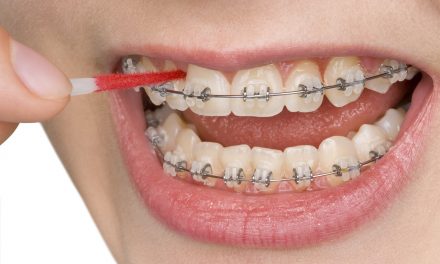Scaling and root planing is a common procedure used to treat gum disease and protect long-term oral health. Sometimes called a deep dental cleaning, it goes beyond what you would normally experience in a regular hygiene appointment. If you have been told you need this treatment, you may wonder how long scaling and root planing takes and what to expect during the process.
This guide will walk you through the procedure, timing, and recovery in detail, while also addressing common concerns like discomfort, number of visits, and how the treatment helps prevent periodontal disease.
Understanding Scaling and Root Planing
Scaling and root planing is a type of deep cleaning used by a dental professional to remove plaque and tartar that have built up beneath the gum line.
- Scaling involves cleaning the tooth surfaces, especially below the gums, using special tools or an ultrasonic device.
- Root planing smooths the tooth roots so bacteria have fewer places to hide and gum tissue can reattach more easily.
This procedure is usually recommended when gum disease has advanced beyond gingivitis and needs more than a standard cleaning to restore gum health.
Why Timing Matters in Treating Gum Disease
If gum disease is left untreated, bacteria can damage gum tissue, leading to bleeding gums, swelling, and eventually bone loss. In advanced gum disease, also known as periodontitis, tooth roots can become exposed, teeth may loosen, and even tooth loss can occur.
Scaling and root planing is often the first line of defense against periodontal disease. Addressing it promptly prevents further damage and helps keep your gums healthy. The amount of time the procedure takes depends on how advanced the disease is and how much plaque and tartar need to be removed.
So, How Long Does Scaling and Root Planing Take?
The time it takes for scaling and root planing varies, but most people can expect: 
- One appointment for mild cases: If only a small area is affected, the procedure may be completed in about 1 to 2 hours.
- Two separate visits for more extensive treatment: For moderate to advanced gum disease, the mouth is usually treated in halves, sometimes referred to as the upper and lower sections or the right and left sides. Each half may take 1 to 2 hours, requiring two separate visits.
- Occasional four-quadrant appointments: In rare cases of severe periodontal disease, treatment may be split into four visits, each focusing on one quarter of the mouth.
Your dentist or dental hygienist will decide how many visits you need based on the condition of your gums and the amount of plaque and tartar present.
Step by Step: What Happens During the Procedure
1. Numbing and preparation
Before treatment begins, the dental professional may apply a local anesthetic to keep you comfortable. This numbs the gums and tooth roots so scaling and root planing does not hurt.
2. Scaling below the gum line
Using special tools or an ultrasonic device, the hygienist removes plaque and tartar from around the teeth and beneath the gum line. This step targets disease-causing bacteria that regular brushing and flossing cannot reach.
3. Root planing for smoother surfaces
The hygienist then smooths the root surfaces to help gums heal and reattach to the teeth. This makes it harder for bacteria to grow in the future.
4. Rinsing and antimicrobial support
An antimicrobial mouthwash may be used to reduce bacteria. In some cases, your dentist may place medication under the gum line to help control infection.
5. Post-treatment instructions
You will be given care instructions to follow at home, including brushing, flossing, and possibly using an antimicrobial rinse.
Does Root Planing Hurt?
Most people feel little to no pain during the procedure thanks to local anesthesia. After the numbing wears off, you may notice some mild discomfort, bleeding, or sensitivity for a few days. Following your dentist’s instructions and using recommended mouth rinses can help reduce irritation and support healing.
Why Two Appointments Are Often Needed
Deep cleaning is physically demandingfor both the dental professional and the patient. Completing one half of the mouth at a time allows for more thorough cleaning and gives you a chance to heal between visits. Splitting the procedure also makes it easier to keep one half of the mouth functional while the other half recovers.
Healing and Recovery After Scaling and Root Planing
- Short-term healing: You may have mild swelling or bleeding for a day or two.
- Longer-term benefits: As gums heal, they will look less swollen and fit more snugly around your teeth.
- Follow-up visits: Your dentist may schedule a second appointment to check healing and remove any remaining plaque.
With proper care, the procedure greatly reduces the risk of tooth loss, bone loss, and infection linked with periodontal disease.
How Scaling and Root Planing Supports Overall Health
Healthy gums do more than just protect teeth. They also play an important role in preventing bacteria from spreading to other parts of the body. Treating gum disease can reduce the risk of complications such as heart disease and diabetes, conditions that are often linked with chronic oral infections.
Preventing Gum Disease After Treatment
 Scaling and root planing is only the beginning. To prevent gum disease from returning, it is important to:
Scaling and root planing is only the beginning. To prevent gum disease from returning, it is important to:
- Brush thoroughly twice a day
- Floss daily to remove plaque along the gum line
- Eat a balanced diet to support gum health
- Avoid smoking, which can slow healing and increase risk of infection
- Keep up with regular dental checkups and cleanings
These steps help ensure your gums stay healthy long after the procedure is complete.
Common Questions About Scaling and Root Planing
Can it be done in one visit?
Yes, some patients can have scaling and root planing completed in one appointment, but most require at least two visits for thorough care.
Will my gums heal completely?
With good oral hygiene and professional care, gums can heal and reattach to tooth roots, stopping disease progression.
How soon can I eat after treatment?
Once the numbness wears off, you can eat soft foods. Avoid very hot, spicy, or hard foods for the first day.
Is deep cleaning the same as a regular cleaning?
No. A standard cleaning removes plaque and tartar above the gum line, while scaling and root planing targets bacteria and buildup below the gums.
Final Thoughts
So, how long does scaling and root planing take? For most people, it requires two separate visits lasting 1 to 2 hours each, although mild cases may be completed in a single appointment. The exact time depends on the severity of gum disease, the amount of buildup, and how many areas need treatment.
While the procedure may sound lengthy, it is an essential step in treating gum disease, preventing bone loss, and keeping your gums healthy. With proper care after treatment, scaling and root planing offers lasting benefits for both oral and overall health.
References:
https://my.clevelandclinic.org/health/treatments/23983-tooth-scaling-and-root-planing
https://www.colgate.com/en-us/oral-health/gum-disease/what-dentists-do-when-root-planing-and-scaling-teeth
https://www.healthline.com/health/deep-cleaning-teeth
https://www.ada.org/sitecore/content/ADA-Organization/ADA/MouthHealthy/home/all-topics-a-z/scaling-and-root-planing
https://www.webmd.com/oral-health/what-to-know-about-periodontal-scaling-and-root-planing






Recent Comments